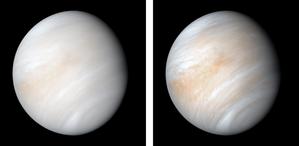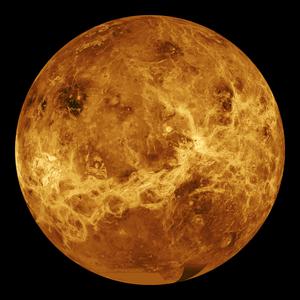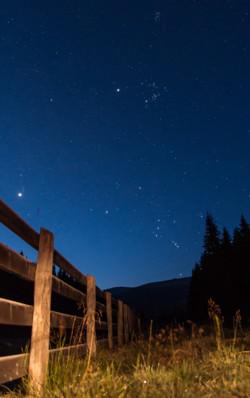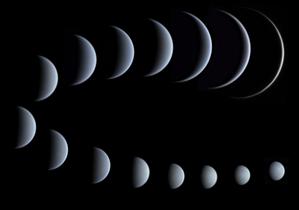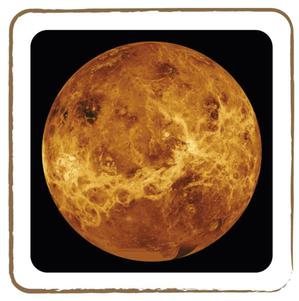Glossary term: 金星
Description: 金星是距离太阳第二近的行星,经常被称为地球的孪生兄弟。它是一颗岩石质的类地行星,半径略大于 6000 公里,约为地球半径的 95%,质量是地球质量的 0.815 倍。金星大气的密度是地球的 90 倍,它的主要成分是二氧化碳,还有浓厚的硫酸云层覆盖整个表面。厚重的大气层产生了非常强烈的温室效应,导致金星表面温度高达 460 摄氏度。
金星与太阳的平均距离为 1.08 亿公里,约为 0.72 个天文单位(日地距离)。它绕太阳公转一周需要224.7天。相较于遥远的恒星,金星绕着它的轴自转一周也需要很长时间;一个金星日相当于 243 个地球日。这比金星绕太阳运行一周的时间还要长。金星没有已知的卫星。
金星以罗马爱神维纳斯命名。由于它离太阳很近,因此在日出前或日落后的夜空中经常可以看到金星。在这种情况下,即使用肉眼观察,金星也非常明亮,传统上被称为晨星或昏星。用双筒望远镜可以看到,金星有与月亮相似的相位变化。
Related Terms:
See this term in other languages
Term and definition status: The original definition of this term in English have been approved by a research astronomer and a teacher The translation of this term and its definition is still awaiting approval
The OAE Multilingual Glossary is a project of the IAU Office of Astronomy for Education (OAE) in collaboration with the IAU Office of Astronomy Outreach (OAO). The terms and definitions were chosen, written and reviewed by a collective effort from the OAE, the OAE Centers and Nodes, the OAE National Astronomy Education Coordinators (NAECs) and other volunteers. You can find a full list of credits here. All glossary terms and their definitions are released under a Creative Commons CC BY-4.0 license and should be credited to "IAU OAE".
If you notice a factual or translation error in this glossary term or definition then please get in touch.
Related Media
可见光下的金星
Credit: 美国宇航局/JPL-加州理工学院 credit link
License: PD Public Domain icons
金星表面
Credit: 美国宇航局/JPL credit link
License: PD Public Domain icons
守护星辰与大海
Credit: Likai Lin/IAU OAU
License: CC-BY-4.0 Creative Commons 署名 4.0 国际 (CC BY 4.0) icons
猎户座,摄于罗马尼亚
Credit: Alex Conu/IAU OAE
License: CC-BY-4.0 Creative Commons 署名 4.0 国际 (CC BY 4.0) icons
角度问题
Credit: 克里斯托弗·巴埃斯/国际天文学联合会教育办公室 (CC BY 4.0)
License: CC-BY-4.0 Creative Commons 署名 4.0 国际 (CC BY 4.0) icons
Related Activities
Children's Planetary Maps: Venus
astroEDU educational activity (links to astroEDU website) Description: Learn more about our nearest neighbour
License: CC-BY-4.0 Creative Commons 署名 4.0 国际 (CC BY 4.0) icons
Tags:
Planetary cartography
, Spatial thinking
Age Ranges:
6-8
, 8-10
, 10-12
, 12-14
Education Level:
Middle School
, Primary
, Secondary
Areas of Learning:
Social Research
Costs:
Low Cost
Duration:
2 hours
Group Size:
Group
Skills:
Analysing and interpreting data
, Asking questions
, Communicating information
, Constructing explanations
, Developing and using models
, Engaging in argument from evidence
, Planning and carrying out investigations
